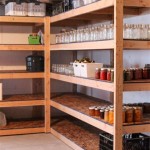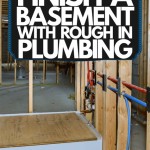The Best Way to Finish Your Basement Floor: A Comprehensive Guide
Finishing a basement floor can be a daunting task, but it's well worth the effort. A finished basement adds much-needed space to your home and can increase its value. However, there are a few key factors to consider when choosing the best way to finish your basement floor.
1. Type of Flooring
There are several different types of flooring that can be used in a basement, including carpet, tile, laminate, and vinyl. Each type of flooring has its own advantages and disadvantages, so it's important to choose the one that's right for you.
Carpet:
Carpet is a warm and comfortable option that can help to reduce noise. However, it's not the best choice for basements that are prone to moisture. Carpet can also be difficult to clean and maintain.Tile:
Tile is a durable and easy-to-clean option that's perfect for high-traffic areas. However, it can be cold and uncomfortable on bare feet. Tile can also be expensive to install.Laminate:
Laminate is a relatively inexpensive and easy-to-install option that looks like hardwood. However, it's not as durable as hardwood and can be easily damaged by moisture. Laminate can also be noisy when walked on.Vinyl:
Vinyl is a versatile and affordable option that's available in a variety of colors and patterns. It's also durable, easy to clean, and moisture-resistant. Vinyl is a good choice for basements that are prone to flooding.2. Moisture Protection
Basement floors are prone to moisture, so it's important to take steps to protect your flooring from water damage. This can be done by installing a vapor barrier or moisture barrier before installing the flooring. A vapor barrier is a thin sheet of plastic that helps to keep moisture from evaporating up from the ground. A moisture barrier is a thicker sheet of plastic that helps to keep water from seeping through the floor from below.
3. Insulation
Insulating your basement floor can help to keep it warm and comfortable. This is especially important if you plan on using your basement as a living space. There are several different types of insulation that can be used in a basement, including fiberglass batts, cellulose, and spray foam. Fiberglass batts are the most common type of insulation and are relatively inexpensive. Cellulose is a natural insulation that's made from recycled paper. Spray foam is a high-performance insulation that's applied as a liquid and expands to fill the space. Spray foam is the most expensive type of insulation but it's also the most effective.
4. Finishing Touches
Once you've installed the flooring, you can add finishing touches to complete the look of your basement. This can include adding baseboards, moldings, and paint. You can also add rugs or area rugs to make the space more comfortable. The finishing touches you choose should complement the style of your basement and your personal taste.

Basement Finishing Options Walls Ceiling And Floor

What Kind Of Flooring Should I Use To Finish My Basement Ozburn Hessey

Thermaldry Basement Flooring Systems Waterproof

Steps For Finishing Your Basement Budget Dumpster

Insulating And Finishing An Old Basement Floor Fine Homebuilding

How To Carpet A Basement Floor Diy Family Handyman

What Is The Best Flooring For Basements Get Pros And Cons

Diy Basement Floor Stain And Finish 2 Colors Without Etching Youtube

Paint And Your Waterproofed Basement Floors Tom S Waterproofing Inc

Best Basement Flooring Options Forbes Home
Related Posts







